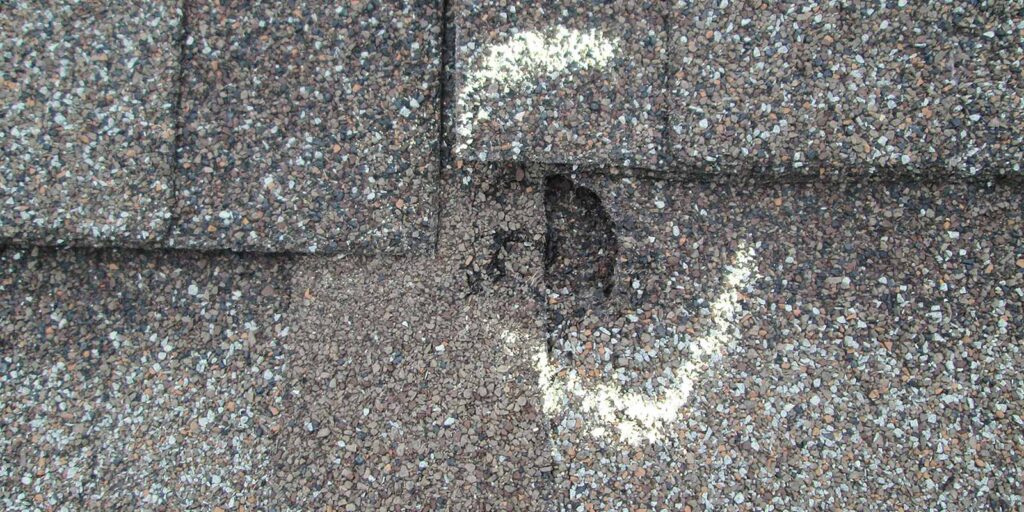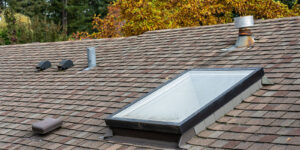Hailstorms can be nerve-wracking. Sitting inside and listening to the ice pelt your home’s exterior is a waiting game. Because you’re not sure what damage you’ll find when you step outside, but the faster you deal with any damage caused by hail, the more protected your home will be. Learn the short- and long-term effects of hail damage on your roof and what you should do about it.
What Hail Damage Does in the Short Term:
There are two ways to spot hail damage on your asphalt roof. One is the typical denting or cracking that you would imagine. Once a shingle is broken, it will allow water to leak through the upper layers of your roof. You should have these shingles replaced as soon as possible to avoid leaks in your home.
The second way to spot damage is if your roof looks shiny. A shiny roof means the hailstorm has worn away the granules in the top layer of your asphalt shingles. Once that layer is gone, your shingles are no longer protecting your home from the elements. This usually happens over a larger surface area and will lead to needing a complete roof replacement.
What Hail Damage Does in the Long Term:
As you’ve probably guessed from the short-term issues, if your roof has suffered hail damage and you don’t do anything about it, the problem will only get worse. Once your shingles are damaged, any kind of weather, even light rain, can wreak havoc. The water will penetrate the shingles and make its way into the lower layers of your roof and eventually your attic, where it can lead to mold, mildew, and even structural problems.
And rain isn’t the only thing you’ll have to worry about. On hot summer days, the heat will expand damaged shingles. Once the temperature returns to normal, they contract, leaving them brittle and ready to fall off during a windstorm or completely broken during another hailstorm.
Should You Repair or Replace Your Roof After Hail Damage?
Much of the time, an experienced roofer can replace just the damaged shingles. Make sure that you ask the roofer if they can do both minor repairs and full replacements. You would be surprised at how many roofers are only equipped to do replacements and will try to sell you a new roof even if you simply need repairs.
However, you should have the repairs done as soon as possible. If you let the damage sit, it will undoubtedly mean that you need a full roof replacement. Or, if your roof is over 15 years old, your roofer will likely recommend a full replacement as the roof is nearing the end of its lifespan and won’t be able to endure many more storms, even if damaged areas are repaired.
If you have any type of damage to your roof, we recommend that you consult a roofing company that can handle both small and large repairs before the problem gets any worse!




